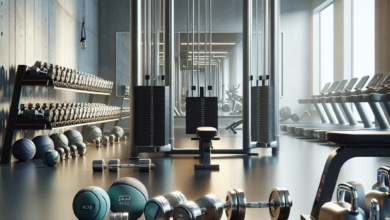Using the Stomach Vacuum Pose to Really Improve Your Abs and Core

Building muscle in and toning the stomach and ab area can be tricky for a lot of people. Many gym attendees will put everything they’ve got into developing the midsection they’ve always wanted, but often see little to no results. So why are visible ab muscles hard to come by? Here are a few common problems:
- Thin Abdominal Muscles – There’s a possibility that the ab muscles in your midsection simply aren’t thick enough. When this is the case, you can have a very trim stomach but lack in muscle tone. It doesn’t really matter how much you work out your core; if you aren’t focusing on strengthening your six-pack muscle (rectus abdominis), then you’ll have trouble seeing significant results.
- Too Much Body Fat – Have you measured the body fat in your abdominal area recently? If you’re having trouble displaying the toned muscle you’ve been working so hard for, too much body fat could be the culprit. When you’re seeking to strengthen and tone your core, experts recommend that men keep their body fat percentages below ten percent. Women rest somewhere around fifteen percent for body fat recommendations.
- Stress – Stress can do a number on your body. When you’re stressed out, your cortisol levels can increase and wreak havoc on your body, including causing easier weight gain and muscle weakness.
- Alcohol – Alcohol isn’t a friend to your midsection. If you’re looking to tone and build abdominal muscle, it’s probably best to minimize the consumption of adult beverages.
If you’ve already addressed the potential inhibitors to your ab and core toning listed above, it might be time to simply change up your approach. One popular method of strengthening your core is the stomach vacuum pose; you might already be familiar with this pose by seeing bodybuilders strike it. But before we get into that, let’s briefly explore how your abdominal muscles work.
- External Obliques – Your external obliques are located on the sides of your stomach. This set of muscles helps your torso, spine, and abdomen with flexion and rotation.
- Internal Obliques – Located just below the external obliques, your internal obliques are responsible for your sideways bending motions, spinal column flex, abdomen compression, and trunk rotation.
- Rectus Abdominis – Also known as the “six-pack,” the rectus abdominis sits right up front in your abdominal area and helps with trunk stabilization and bending.
- Transversus Abdominis – This muscle group stretches from your torso’s front all the way to the back of the ribs. Your breathing is heavily dependent on this muscle group.

How the Stomach Vacuum Can Help
This particular method of strengthening your abdomen will rely on the last set of muscles mentioned, transversus abdominis. To perform this pose, you’ll primarily be contracting your transversus abdominis muscles and then holding that pose for a present amount of time. Here’s how this unique method can benefit those seeking to enhance their core:
- Flattening – One of the number one reasons the stomach vacuum is popular is the flattening effects it can offer. For those looking to tone and define their core, the stomach vacuum can definitely be a great option.
- Posture – Because the stomach vacuum pose focuses on strengthening your core, you can benefit from enhanced posture by practicing it.
- Core Strengthening – Some who practice the stomach vacuum pose gain increased functionality when it comes to performing other exercises and movements; this is because the stomach vacuum pose can help with core strengthening.
- Injury Reduction – When your core strength is maximized to its full potential, it can help prevent serious injury during heavy lifting or other exercises due to the increased power you have at your fingertips.
How to Perform the Stomach Vacuum Pose
The actual stomach vacuum maneuver is simple in concept. It’s basically the act of you sucking in your stomach and holding it. However, just as with any strength-building exercise, the technique determines how effective your results are. We’ve got the steps you need below to perform a stomach vacuum pose correctly and effectively:
- Stand on a flat surface in an upright position. Place your hands on your hips.
- Relax and exhale all the air you currently have in your lungs.
- In this step, you’ll focus on expanding your chest outward. It’s vital that you position your chest out to support the next step.
- Now, brace yourself and suck your stomach inward as far as you can. Hold this pose for as long as you can.
- Repeat steps one through four for your predetermined rep count.
If you need a schedule for your stomach vacuum exercises, consider using the following to get started:
- Week One – Perform three sets and hold for 20 seconds.
- Week Two – Perform three sets and hold for 30 seconds.
- Week Three – Perform three sets and hold for 40 seconds.
Once you’re comfortable with the move, you can consider holding for longer or increasing your sets.

Pro Tips
If you’re looking to maximize the effectiveness of your stomach vacuum pose, check out these pro tips:
- When you’re sucking your stomach in, try to envision your front abdominal area meeting your spine. It may sound silly, but visualizations can help!
- When you’ve mastered the stomach vacuum pose, try doing it in positions other than standing upright. You can perform the maneuver while laying flat, seated, kneeling, or anywhere in between!
- For best results, monitor your diet while working on your abs and core. Consuming the wrong foods and liquids during training can negate all the hard work you’re putting in.
- While the stomach vacuum pose is straightforward in concept, it takes practice to get it down. It’s crucial that you’re consistent with your efforts if you want to see results.



